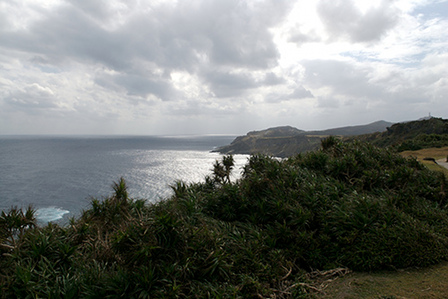The following is excerpted from Forgotten Worlds: From Atlantis to the X-Woman of Siberia and the Hobbits of Flores, published by Inner Traditions, Bear & Company.
Graham Hancock explains his initial interest in prehistoric underwater archaeology in chapter 28 of Underworld, entitled “Maps of Japan and Taiwan 13,000 Years Ago?” In the opening paragraph he writes: “It was the submerged structures of Japan that first awakened me to the possibility that an underworld in history, unrecognized by archaeologists, could lie concealed and forgotten beneath the sea” (Hancock 2002). Since the book’s release, Hancock has become the world’s most outspoken proponent of investigating sunken ruins in an effort to learn more about possible lost civilizations.
Many anomalous structures scattered around the world bear the signature of human design. In addition to the few we have discussed, other notable ones are the sunken city beneath the Gulf of Cambay off the southwest coast of India, the ruins found off Cuba, and finally, and most important, the underwater pyramids of Yonaguni, Japan. All of these structures, except those found off of Cuba, are known to have been above water within the past thirteen thousand years, during the last ice age.
In the earliest times, the prehistoric inhabitants of Japan, the Jomon, developed a sophisticated material culture. The Jomon were not of typical East Asian descent; they were proto-Caucasoids, fair-skinned with prominent noses and full, light-colored beards. Many other similarities link them to other primitive people in the Americas and ancient Northern Europe. Although their society was primitive by the standards of later times, they were the first culture on Earth to develop pottery, according to mainstream theorists. Examples of this technology date back to 16,000 BCE. This was a time when many of the submerged structures of Yonaguni would have been above water, and if they were in fact built by human hands, this would have been the time that their construction was underway. Some of the figurines from later in the Jomon period depict what appear to be humanoid creatures with space suits, including helmets, or even, in some cases, underwater breathing apparatuses.
Erich von Däniken noted this in a number of his books, including his most famous, Chariots of the Gods? His intent was to point directly to ancient aliens, but I’d rather think that in the distant past humans were more inventive than they are now, and that there were civilizations deep in antiquity, perhaps of terrestrial origin, whose technology and cultural sophistication far surpassed our own. The Jomon even possessed, though cruder in construction, megalithic technology; several stone circles built by them are known to exist.
Without a doubt, Japanese culture is graced with a rich mythological heritage. In 712 CE this wealth of myth and legend culminated in the first written chronicle of Japan, known as the Kojiki. Many stories in this manuscript told of horrendous earthquakes and conflagrations. There were entire ages when the world was ruled by the gods. During this mythical age of gods and empires, the Jomon were the dominant race of the Japanese islands.
The modern legacy of Japan’s underwater ruins dates back to 1987. On a clear and windy spring day, dive-master Kihachiro Aratake headed out to explore. Shortly after entering the sapphire blue water of the East China Sea, he began searching for unique formations that would prove interesting. Suddenly, he was confronted with an enigma. Right before him was what appeared to be a massive stone monument, rising some twelve meters from the ocean floor. Aratake said when he looked at it for the very first time he thought of the pyramids of Egypt, such as the stepped pyramid of Saqqarah, or those of ancient Mesopotamia. He felt that some noble race must have built these awesome ruins, for some divine reason. He called this initial site Iseki Point, or “Monument” Point.
Aratake’s initial discovery was 73 meters long, 27 meters wide, and 14 meters high (Joseph 2005, 172-77). But this wasn’t the only relevant discovery. Additional sites were also located from the small island of Yonaguni in the southwest, to Okinawa and a considerable swath of the surrounding territories. Two of these locations were Kerama and Aguni, approximately 500 kilometers away.
Graham Hancock had an opportunity to investigate these locations early on in his scuba-diving career. As Hancock reports, for a number of years the divers at the island of Aka, in the Kerama group some 40 kilometers west of Okinawa, have talked about a series of submerged stone circles at a depth of some 30 meters. Other structures very close by show evidence of being cut and worked by human hands. The preeminent structure at Kerama is the “Central Circle.” Resting at an approximate depth of 27 meters, it has a diameter of 20 meters. Other features include the “Small Center Circle” and the “Stone Circle,” the latter of which has an enormous diameter of about 150 meters (Hancock 2002, 10).
Off Aguni Island, they’ve discovered what appear to be stone shafts built by human hands. Hancock writes: “As they are lined with small blocks, there is little doubt that these shafts are man-made. The largest and deepest has a diameter of 3 meters and reached a maximum depth (below the summit of the sea-mount) of about 10 meters. Others are typically 2 to 3 meters in diameter with a depth of less than 7 meters. A few are narrower and shallower. One has a subsidiary chamber cut sideways into the wall of the main shaft” (Hancock 2002, 10).
In 1996, Ken Shindo, a local Okinawan dive-master, told Graham Hancock a fascinating story of an anomalous underwater structure near the tiny fishing community of Yonaguni, Japan, the southernmost island of the Japanese chain. Shindo explained that he had been working with Professor Masaaki Kimura, a marine seismologist of the University of the Rykyus. He outlined several basic points regarding direct human intervention in the formation of the site. These include “traces of marks that show that human beings worked the stone. There are holes made by wedge-like tools called kusabi in many locations” (Hancock 2002, 597).
The structure is continuous from under the water to land, and evidence of the use of fire is present. Stone tools are among the artifacts found underwater and on land. Some tablets with carving that appears to be letters of symbols, such as what we know as the plus mark “+” and a “V” shape, were retrieved from under the water” (Hancock 2002, 598). These findings exist amid a cultural and mythological backdrop that seems vast, imposing, and incalculable.
Frank Joseph is a scholar and author who has studied the matter of Japanese ruins extensively. In an article published in Atlantis Rising magazine in 1997, entitled “Japan’s Underwater Ruins,” he writes: “If, after all ongoing exploration here does indeed reveal more structures linking Yonaguni with Okinawa, the individual sites may be separate components of a huge city lying at the bottom of the Pacific” (Joseph 2005, 172). Frank Joseph wholeheartedly believes in the significance of this discovery. It is possible that in time his belief in a once-vast Pacific motherland will prevail. With the enormous advances in archaeology and independent research, confirmation may yet take place. However, the concept of a sophisticated civilization in the Pacific is in part a product of his hyperdiffusionism.
Joseph writes:
Okinawa’s drowned structures find possible counterparts at the eastern limits of the Pacific Ocean, along Peruvian coasts. The most striking similarities occur at ancient Pachacamac, a sprawling religious city a few miles south of the modern capital at Lima. Although functioning into Inca times, as late as the sixteenth century, it pre-dated the Incas by at least 1,500 years and was the seat of South America’s foremost oracle. Pilgrims visited Pachacamac from all over Tawantinsuyu, the Inca Empire, until it was sacked and desecrated by the Spaniards under Francisco Pizarro’s high-spirited brother, Hernando, with 22 heavily armed conquistadors. Enough of the sun-dried, mud-brick city remains, with its sweeping staircases and broad plazas, to suggest parallels with the sunken buildings around Okinawa. Two other pre-Inca sites in the north, just outside Trujillo, likewise share some leading elements in common with the overseas, undersea structures. The so-called Temple of the Sun is a terraced pyramid built two thousand years ago by a people known as the Moche. More than 100 feet high and 684 feet long, the irregularly stepped platform of unfired adobe bricks was formerly the colossal centerpiece of a city sheltering thirty thousand inhabitants. Its resemblance to the structure found at Yonaguni is remarkable (Joseph 2005, 174).
Others such as my good friend Robert Schoch–although open to differing theories of civilizations that are now submerged–consider at least a few of the known examples, including Yonaguni, to be naturally formed. Regarding Yonaguni, Schoch writes:
As far as I could determine, [the monument was] composed entirely of solid “living” bedrock. No part of the monument is constructed of separate blocks of rock that have been placed into position. This is an important point, for carved and arranged rock blocks would definitively indicate a man-made origin for the structure–yet I could find no such evidence. During my initial two dives of September 1997 I was unable to determine, even in a general way, the stone of which the Yonaguni Monument is composed. This was due to the fact that the surfaces of the rocks are covered by various organisms (algae, corals, sponges, and so forth) that obscure the actual surfaces. I believe that this coating of organic material tends to make the surfaces of the Yonaguni Monument appear more regular and homogeneous than they actually are. This, in part, enhances the impression that this must be an artificial, man-made structure (Schoch 1999).
Schoch has often suggested that such natural geologic formations could have been utilized or modified by humans during that above-water period. He says in Voices of the Rocks:
Possibly the choice between natural and human-made isn’t simply either/or. Yonaguni Island contains a number of old tombs whose exact age is uncertain, but that are clearly very old. Curiously the architecture of the tombs is much like that of the monument. It is possible that humans were imitating the monument in designing the tombs, and it is equally possible that the monument was itself somehow modified by human hands. That is, the ancient inhabitants of the island may have partially reshaped or enhanced a natural structure to give it the form they wished, either as a structure on its own or as the foundation of a timber, mud or stone building that has since been destroyed. It is also possible that the monument served as a quarry from which blocks were cut, following the natural bedding, joint and fracture planes of the rock, then removed to construct buildings that are now long gone (Hancock 2002, 599-600).
Schoch offers compelling, practical, and engaging arguments, with a fair dose of common sense. But I don’t feel we can measure structures like Yonaguni with any practical measuring systems. The ruins of Yonaguni, or whatever they are, have passed away from our normal realm of existence, into the shadowy underworld of the unusual and unexplained. We must view the ruins with an open mind and must not be afraid to ask strange or absurd questions, because that devotion to curious inquiry is truly the root of all human knowledge.
Conclusive evidence must and will be found regarding the artificiality of anomalous underwater structures such as those found at Yonaguni and off the coast of Cuba. Furthermore, ruins such as those found near India and beneath the waters of Lake Titicaca offer further evidence for the existence of a vast underwater world containing structures stretching back to the dimmest chapters of human antiquity. Contrary to Plato’s vision of the existence and destruction of Atlantis, is it becoming clear that there may in fact be more than one Atlantis–whether it be near Tartessos, Helike; or Palvoperti in Greece; Dwarka, off the coast of India; or the sunken pyramids at Rock Lake, Wisconsin. We are learning more with every discovery, and through independent research and investigation and the implementation of the latest in investigative technology we are cracking the code of the underwater worlds with regard to how they relate to our ancient past.
Photo by sota-k, courtesy of Creative Commons license.













